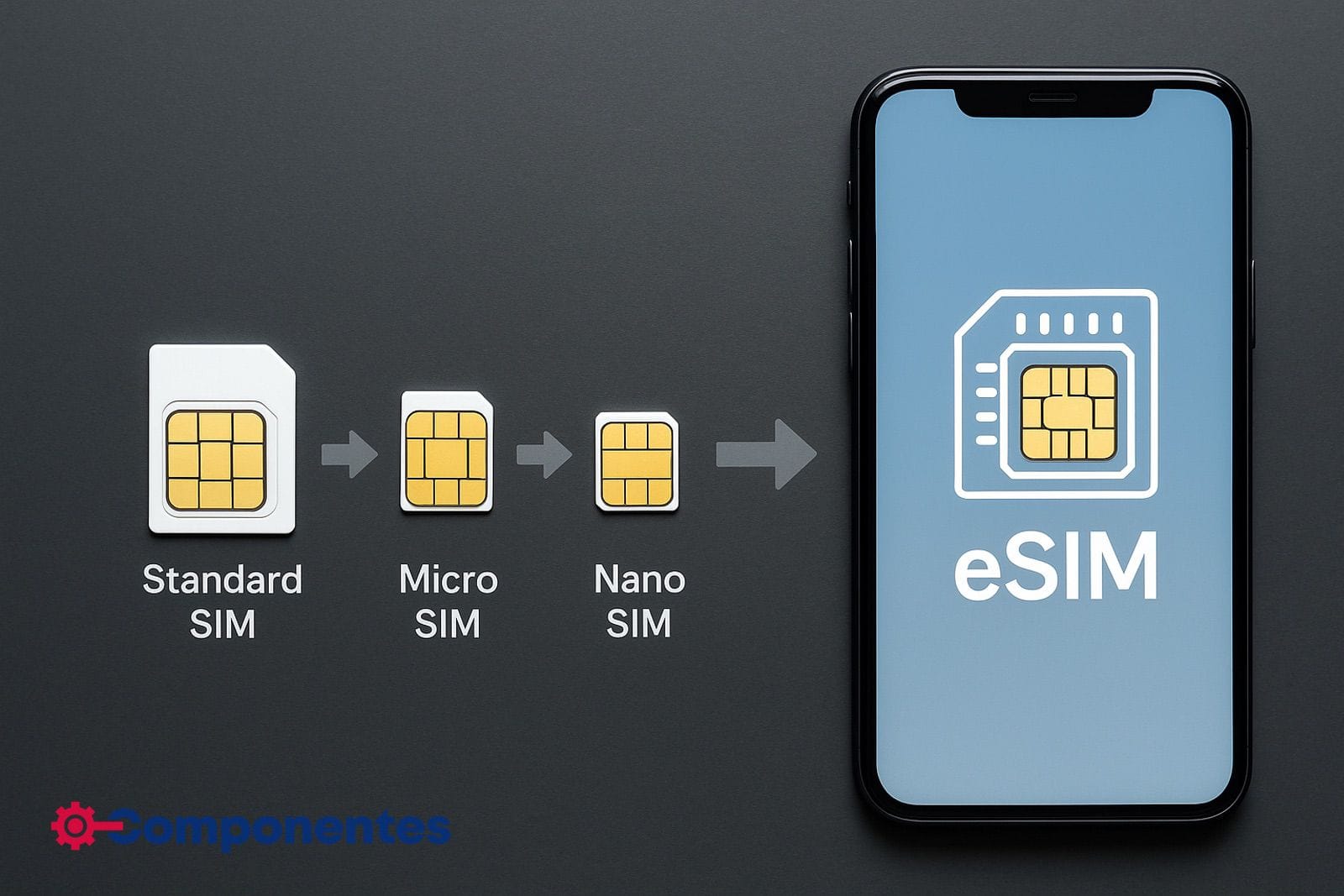The physical SIM card is reaching its twilight. In its place, the eSIM—a built-in, digital version of the mobile user identifier—promises to revolutionize how we connect to cellular networks, ushering in a new paradigm of flexibility, efficiency, and scalability.
For decades, SIM cards have been the key element that allows a mobile device to identify itself on a carrier’s network. That small insertable chip—formally known as the Subscriber Identity Module—has witnessed multiple technological generations: from 2G to the current 5G, passing through 3G and 4G LTE. However, in the era of the Internet of Things, global mobility, and devices without physical ports, the natural evolution has been to integrate that functionality directly into the hardware: thus, the eSIM was born.
From SIM to eSIM: An Inevitable Evolution
The story of the physical SIM begins in 1991 when the German company Giesecke & Devrient delivered the first 300 SIM cards to the operator Radiolinja in Finland. At that time, its size was similar to a credit card. Over the years, smaller formats were introduced: MiniSIM (2FF), MicroSIM (3FF), and NanoSIM (4FF), aimed at saving space in devices.
The eSIM (Embedded SIM) represents a qualitative leap: it is no longer a replaceable card, but rather a chip soldered directly onto the device’s motherboard, capable of storing multiple remotely downloadable operator profiles. This change responds to modern needs for ubiquitous connectivity, efficiency in hardware design, and scalability in device management.
Format Comparison: From Standard to Digital
| Format | Dimensions | Introduction | Physical Replacement | Notes |
|---|---|---|---|---|
| SIM (1FF) | 85.6 x 53.98 mm | 1991 | Yes | Credit card size. Obsolete |
| MiniSIM (2FF) | 25 x 15 mm | 1996 | Yes | Used in GSM mobiles until 2010 |
| MicroSIM (3FF) | 15 x 12 mm | 2003 | Yes | Popular in smartphones until 2015 |
| NanoSIM (4FF) | 12.3 x 8.8 mm | 2012 | Yes | Still common in most mobiles |
| eSIM (MFF2) | 6 x 5 mm (soldered) | 2016 | No | Integrated into the device, no slot |
While physical formats reduced in size over the years, the eSIM goes further: it not only optimizes space but also eliminates the need for mechanical components (slots, trays, contacts) and allows for more advanced network management.
How Does an eSIM Work?
An eSIM stores digital profiles containing the necessary information to authenticate the user on a mobile network, just like a physical SIM. These profiles are downloaded through a secure mechanism defined by GSMA and can be activated, modified, or deleted remotely.
The system is based on a client-server model involving a remote provisioning platform called SM-DP+ (Subscription Manager Data Preparation), managed by the carrier. The user can scan a QR code or use an app to install the corresponding profile.
Additionally, a single device can contain multiple profiles, making it easy to use several lines—for example, personal and professional—or access local carriers during international travel without needing to swap cards.
Key Advantages of the eSIM
The improvements over the physical SIM are notable:
- Instant connectivity: allows activating a mobile line without waiting for a physical card or visiting a store.
- Hassle-free roaming: travelers can purchase an international data plan before arriving at their destination and activate it upon landing.
- More efficient design: by eliminating the SIM slot, devices can be thinner, water-resistant, and devoid of moving parts.
- Reduction in logistical and environmental costs: there’s no need to manufacture, package, or distribute plastic cards.
- Better corporate management: companies can provision hundreds or thousands of devices with preconfigured eSIMs and manage lines remotely.
Limitations and Challenges
Although its benefits are evident, mass adoption of eSIMs still faces certain obstacles:
- Limited compatibility: not all devices, especially in mid-range or low-end tiers, currently support eSIM.
- Uneven adoption by carriers: some countries and companies offer partial support or require less intuitive processes for activation.
- Cultural resistance: many users still value physical control over their SIM or fear difficulties in case of theft or terminal damage.
Applications Beyond Mobile
The eSIM doesn’t only benefit smartphones. It is also present in:
- LTE smartwatches: such as Apple Watch or Galaxy Watch, which allow for phone independence.
- Laptops with integrated 4G/5G: ideal for professionals who work on the move.
- IoT devices: sensors, cameras, connected vehicles, 5G routers, and more.
The ability to activate, reconfigure, or suspend lines without physical intervention makes the eSIM a key ally in mass deployments of connected devices.
Holafly: Global Connectivity Without Roaming
Among the most widespread use cases today is travel connectivity. Companies like Holafly have democratized the use of eSIMs for tourists, digital nomads, and business travelers. Their model is based on offering eSIMs with mobile data in over 160 countries, which are activated after purchase by scanning a simple QR code.
Users can keep their regular line active while using Holafly’s eSIM for data, thus avoiding roaming costs or reliance on public Wi-Fi. This solution has gained popularity for its immediacy, ease of use, and transparency of costs.
Toward a Post-SIM World
According to estimates from GSMA Intelligence, over 80% of smartphones sold in 2030 will be equipped solely with eSIM or its evolution, the iSIM (integrated into the device’s SoC). Manufacturers like Apple, Samsung, Google, and Motorola are already launching compatible devices, and some models in the United States completely forgo the physical slot.
Carriers, in turn, are advancing in deploying interoperable SM-DP+ platforms and creating friendlier activation systems. Regulations are also adapting to ensure line portability and equitable access to this technology.
The eSIM is no longer a promise of the future: it is a reality that redefines how we understand mobile connectivity. From enhancing user experience to facilitating new architectures in the IoT world, its impact will be profound, lasting, and increasingly visible. The transition is underway, and the change—much like the shift from landline to mobile—is unstoppable.
Source: Componentes.es

